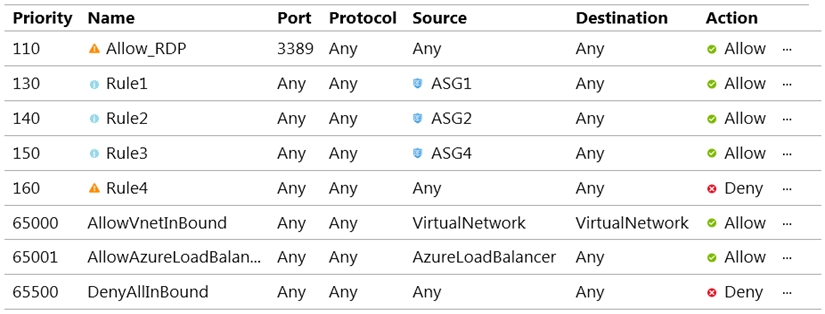

HOTSPOT -
You have the Azure virtual networks shown in the following table.
You have the Azure virtual machines shown in the following table.
The firewalls on all the virtual machines allow ping traffic.
NSG1 is configured as shown in the following exhibit.
Inbound security rules -
Outbound security rules -
For each of the following statements, select Yes if the statement is true. Otherwise, select No.
NOTE: Each correct selection is worth one point.
Hot Area:

gcpbrig01
Highly Voted 4 years, 4 months agorgullini
4 years, 2 months agoCyberbug2021
4 years, 2 months agoBalderkVeit
4 years, 1 month agomakimaki
2 years, 10 months agopentium75
11 months, 2 weeks agoAMMANANA
Highly Voted 4 years, 2 months agoCJ32
3 years, 5 months agonicksu
4 years, 1 month agobxlin
Most Recent 1 year, 1 month agobxlin
1 year, 1 month agoflafernan
1 year, 8 months agocris_exam
1 year, 5 months agofoobar1985
1 year, 10 months agomajstor86
2 years, 4 months agomung
2 years, 7 months agomung
2 years, 7 months agomung
2 years, 7 months agoCK9797
2 years, 8 months agoacexyz
3 years agoWMG
3 years, 3 months agoEltooth
3 years, 3 months agoazcourse
3 years, 8 months agoSecurityAnalyst
3 years, 10 months agorsharma007
3 years, 11 months agoSandomj55
3 years, 11 months agohydrillo
4 years agoj410aksl
3 years, 9 months agoITTesters
2 years, 2 months agokumax
4 years ago